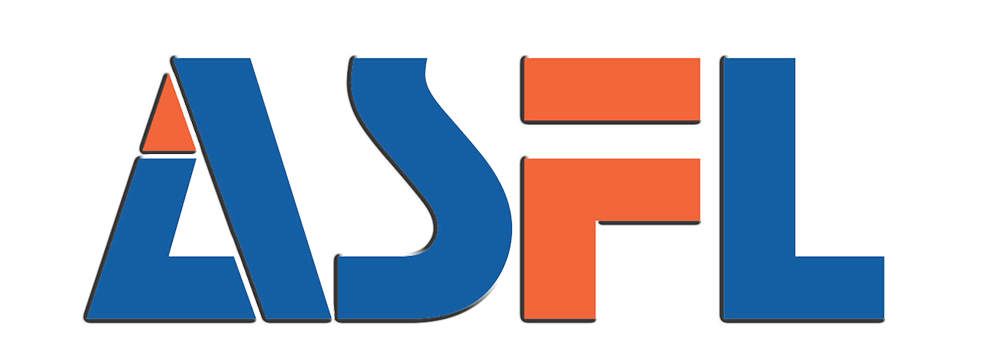Tutarsız Dolum Hacimleri: Nedenleri ve Hassas Çözümler
Olgular: Tutarsız dolum seviyelerinin nedenleri ve ürün kaybı
Otomatik dolum makinelerinde tutarsız dolum hacimleri, yıllık %3-7 ürün kaybına neden olur ve bu durum çoğunlukla valf aşınması, pompa kalibrasyon sapması veya yanlış throttle ayarlarından kaynaklanır. Soslar veya karbonatlı içecekler gibi viskozitesi değişken sıvılar, ekipman dinamik olarak ayarlanmadığında özellikle taşma ve sızıntıya eğilimlidir.
Prensip: Pompa kalibrasyonunun dolum doğruluğuna etkisi
±%0,25 pompa kalibrasyon toleransını korumak hassasiyet açısından kritik öneme sahiptir. Zamanla kalibre edilmemiş pompalar 500 çalışma saatinin ardından %5'e varan oranda sapabilir ve bu durum doğrudan tutarlılığı etkiler. Farklı mekanizmalar değişen doğruluk seviyeleri sunar:
| Dolum Mekanizması | Doğruluk Aralığı | En iyisi |
|---|---|---|
| Piston Sistemleri | ±0.1%-0.5% | Yüksek viskoziteli |
| Taşma Memeleri | ±0.5%-1% | Düşük-viskozite |
Ürün tipine göre doğru sistemin seçilmesi, optimal performansı sağlar.
Vaka Çalışması: Bir içecek üretim hattında hacim varyansının giderilmesi
Karbonatlı içecek üreten bir firma, haftalık kalibrasyon kontrolleri ve gelişmiş pistonlu dolum makineleri sayesinde dolum hatalarını %89 oranında azalttı. Gerçek zamanlı akış ölçerler şurubun viskozite değişimlerini tespit ederek üretim sırasında otomatik basınç ayarlamalarına imkan sağladı ve bu da fazladan verilen miktarı en aza indirirken hat verimliliğini artırdı.
Strateji: Gerçek zamanlı seviye sensörleri ve geri bildirim döngüleri uygulamak
Modern dolum sistemleri, sapmaları 0,2 saniye içinde düzeltmek için PID denetleyicilerle entegre lazer sensörler kullanır. Bu kapalı döngü kontrolü, sıcaklık dalgalanmalarına rağmen ±%0,3 doğruluğunu koruyarak manuel müdahaleyi azaltır ve partiler arasında tekrarlanabilirliği artırır.
Trend: Hassasiyeti artırmak için servo sürülü dozaj sistemlerinin benimsenmesi
Yeni dolum sistemlerinin yüzde yetmiş sekizi artık servo motorlara sahip olup, nozul konumlandırma hassasiyetini 0,02 mm'ye ulaştırıyor. Bu sistemler, konteyner şekil bozuklukları ve hız değişiklikleri için otomatik olarak ayar yaparak her hattın yıllık ortalamada ürün kaybını 17.000 ABD doları kadar azaltıyor.
Makine Başlatma Arızaları ve Beklenmedik Şartlarda Kapanmalar: Teşhis ve Önleme
Olay: Güç, Sensör veya Güvenlik Kilidi Arızalarının Belirlenmesi
Başlatma arızaları genellikle güç kaynağı kararsızlığından (%65 vakada etkili), hatalı hizalanmış fotoelektrik sensörlerden veya tetiklenmiş güvenlik kilitlerinden kaynaklanır. Örneğin, kompresörün başlangıcında meydana gelen voltaj dalgalanmaları üretim başlamadan önce erken kapanmalara neden olabilir.
Prensip: Otomatik Dolum Makinelerinde Hata Kodlarının Rolü
Hata kodları gibi E-07 (Düşük Pnömatik Basınç) veya E-12 (Taşıyıcı Hizalama Arızası) sorun gidermeyi kolaylaştırır. Farmasötik hatların analizi, teknisyenlerin bu uyarıları manuel inceleme yöntemlerine göre önceliklendirerek sorunların %40'ını %58 daha hızlı çözdüğünü göstermektedir.
Vaka Çalışması: Bir Farmasötik Hat Üzerinde Beklenmedik Kapanmaların Aşılması
Bir aşı ambalaj tesisi, ardışık arızaları tespit ettikten sonra plansız durma süresini %72 oranında azalttı: kararsız ana güç, servo sürülü kapaklama modüllerini devre dışı bırakan güvenlik kilitlerini tetikleyen 19V dalgalanmalara neden oldu. Çift voltaj stabilizatörlerinin kurulumu ve hata koduna özel tepki protokollerinin uygulanması, işletimde %98,5'lik sürekliliği yeniden sağladı.
Strateji: Başlangıç Kontrol Listeleri ve Acil Durum Protokollerinin Standartlaştırılması
Etkili önleyici iş akışları şunları içerir:
- Ön sensör kalibrasyonu (90° hizalama kontrolleri)
- Elektriksel aşırı yüklemeleri önlemek için bileşenlerin sıralı olarak etkinleştirilmesi
- Güvenli yeniden başlatmalar için kontrollü acil durdurma atlatma prosedürleri
IoT destekli kontrol listeleri kullanan tesisler, manuel süreçlere dayananlara kıyasla %53 daha az başlangıç hatası bildirmektedir.
Trend: IoT İzleme Üzerinden Tahmine Dayalı Teşhislerin Entegrasyonu
Modern sistemlere yerleştirilen titreşim ve termal sensörler, arızaları 8-12 saat önceden tahmin edebilir. Kontak aşınması ve enkoder uyumsuzlukları da dahil olmak üzere 14 anahtar parametrenin analiz edilmesiyle, 2023 yılı kıyaslama testlerinde tahmine dayalı algoritmalar beklenmedik duruşların %45 oranında azalmasını sağladı.
Şişe Konumlandırma Hataları ve Taşıyıcı Bant Tıkanmaları: Hizalama ve Akış Kontrolü
Olay: Tıkanmalara Neden Olan Hizasızlık ve Taşıyıcı Bant Zamanlama Sorunları
Şişe tıkanmaları, hizalanmamış yönlendirme raylarından, taşıyıcı bant ile indeksleme sistemleri arasındaki zamanlama uyuşmazlıklarından veya birikinti oluşmasından kaynaklanır. Bu aksaklıklar sıçramalara, meme ucunda hasara ve maliyetli üretim gecikmelerine neden olur.
İlke: İndeksleme Sistemleri ile Dolum Memeleri Arasındaki Senkronizasyon
Yüksek hızlı dolum, taşıyıcı bandın hareketi ile meme etkinleştirme arasında milisaniye düzeyinde koordinasyon gerektirir. Servo sürülü indeksleme sistemi hızı dinamik olarak ayarlar, photoelektrik sensörler ise dolumdan önce şişenin konumunu doğrular. Hızlı hatlarda yalnızca 0,2 saniyelik bir gecikme tıkanma sıklığını %12 artırır.
Vaka Çalışması: Bir Kozmetik Tesiste Şişe Tıkanıklığından Kaynaklanan Downtime'ı Azaltma
Bir cilt bakım ürünü üreticisi, rehber rayları <1 mm toleransla hizalayarak ve lazer tabanlı sensörlere geçerek taşıyıcı bantla ilgili durma süresini %30 azalttı. Saatte 8.000 şişe ile %99,4'lük bir hizalama doğruluğu elde edildi ve yıllık bakım maliyetlerinde 18.000 ABD doları tasarruf sağlandı.
Strateji: Rehber Rayların ve Fotoelektrik Sensör Yerleşiminin Optimize Edilmesi
En iyi uygulamalar şunları içerir:
- <0,5° açısal esnekliğe sahip ayarlanabilir rehber raylar
- Gerçek zamanlı düzeltme için fotoelektrik sensörleri nozüllerin 15–20 cm ilerisine yerleştirme
- Artık birikimini önlemek için her dört saatte bir taşıyıcı bant temizliği yapılması
Bu önlemler, losyon ve sos gibi viskoz ürünler işleyen makinelerde konumlandırma hatalarını %50 oranında azaltır.
Damlatan Nozüller ve Dolum Sonrası Sızıntılar: Sızdırmazlık ve Kontrol Taktikleri
Olay: Dolum Makinelerinde Dolum Sonrası Damlatma Nedeniyle Taşmalar ve Sızıntılar
Dolum sonrası damlama, dolum işlemlerinin %18'ini etkileyerek israf ve kontaminasyona neden olur. Aşınmış sızdırmazlık elemanları sızıntıların %43'ünden, artan hat basıncı ise %23'ünden sorumludur. Sos gibi yüksek viskoziteli ürünler, meme kapanışının gecikmesi ve yapışkan kalıntı birikimi nedeniyle özellikle risk altındadır.
Prensip: Meme Kapatma Mekanizmaları ve Geri Basınç Kontrolü
Gelişmiş sistemler, 0,3 saniyede kapanan servo tahrikli kapatma valfleri ile ±2 PSI doğruluk sağlayan geri basınç sensörlerini birleştirir. Valfler akışı fiziksel olarak engellerken, basınç regülasyonu kaplar arası geçiş sırasında ani basınç artışını önler. Bazı modeller, sızdırmazlık kuvvetini dinamik olarak ayarlamak için gerçek zamanlı viskozite telafisi özelliğine sahiptir.
Vaka Çalışması: Sos Ambalajlamasında Sızıntının Ortadan Kaldırılması
Bir baharat üreticisi, makineleri üç katmanlı PTFE contalar ve lazerle hizalanmış meme başlıklarıyla donatarak sızıntı kaynaklı israfı %90 azalttı. Akış sensörlerinin konteyner çıkarıldığında anında kapanmasını tetiklemesiyle temizlik süresi %65 kısaltıldı ve üretim kapasitesi korundu.
Tartışma Analizi: Hız ile Damlama Önleme Arasındaki Uzlaşmalar
Süreç hızı ile sızdırmazlık arasında denge kurma konusunda devam eden bir sektör tartışması vardır. Dakikada 200'den fazla çevrim yapan hatlar, daha yavaş olanlara göre %40 daha fazla damlama yaşar. Ancak dinamik basınç ayarlama sistemleri kullanan üreticiler, bu farkı hızı düşürmeden yarıya indirmiş olup tahmini modülasyon sayesinde conta bütünlüğünü korumaktadır.
Strateji: Anti-Damlama Pompları ve Hassas Memelerin Kullanımı
Temel iyileştirmeler şunlardan gelir:
- Standart memeleri yaylı silikon contalı konik tasarımlarla değiştirmek
- Dijital manometreler kullanarak haftalık basınç kalibrasyonları yapmak
- Parçacık kaynaklı valf gecikmesini önlemek için 50 mikronluk hat içi filtreler kurmak
Bu protokolü uygulayan tesisler, 12 ay boyunca sızıntıya bağlı durma süresi olaylarında %83 daha azlık bildirmektedir.
Otomatik Dolum Makineleri için Önleyici Bakım ve Sistematik Arıza Giderme
Olgu: Dolum Ekipmanında Tekrarlanan Mekanik Arızalar
Sızdırma contalarının bozulması, valf aşınması veya aktüatör hizalanmasızlığı gibi tekrarlanan mekanik arızalar, ambalaj hatlarındaki plansız durmalara %23 oranında neden olmaktadır. Bu arızaların %68'ine yetersiz yağlama veya kaçırılan kalibrasyon programları yol açmaktadır ve bunun önlenmesinin güçlü bir potansiyele sahip olduğunu göstermektedir.
İlke: Sistematik Arıza Giderme Yaklaşımı Oluşturma
Etkili teşhis, semptomları kök nedenlere bağlamayı gerektirir. Örneğin, doldurmada tutarsızlık, aşınmış piston contalarından veya kayan basınç regülatörlerinden kaynaklanabilir—her biri farklı düzeltmeler gerektirir. Yapılandırılmış kontrol listeleri, reaktif ve geçici yöntemlere kıyasla tanı hatalarını %41 oranında azaltır.
Vaka Çalışması: Yapılandırılmış Bakım Kayıtlarıyla Durma Süresini %40 Oranda Azaltmak
Bir süt işleyicisi, otomatik hatırlatmalarla dijital bakım kayıtlarını benimseyerek aylık doldurucu durma süresini 14 saatten 8,5 saate düşürdü. Teknisyenler memba tutucu torku ve motor akımı verilerini kaydetti ve arızalardan önce değiştirilmesi gereken bileşenlerin %18'ini belirledi.
Trend: Makine Verisini Kullanarak Tahmine Dayalı Bakıma Geçiş
İmalatçıların yüzde ellisi artık salınım ve hidrolik basınç verilerini izlemek için IoT sensörlerini kullanıyor ve algoritmaların contaların 72 saat öncesinden arızasını tahmin etmesini sağlıyor. Takvime dayalı bakımdan duruma dayalı bakıma geçiş, planlanmayan kesintileri %35 oranında azaltıyor.
Strateji: Dolum Makineleri İçin Sorun Giderme İpuçları Konusunda Operatörlerin Eğitimi
Proaktif bakım sistemlerini kapsayan uygulamalı eğitim programları, ilk seferde onarım başarısını %30 artırır. Temel müfredat unsurları arasında PLC hata kodlarını yorumlamak, senkronizasyon için lazerli aletleri kullanmak ve viskoziteye bağlı doldurmalar için kalibrasyon yapmak yer alır. OEM dokümantasyonu ile birleştirilmiş VR simülasyonları içeren sertifikasyon programları, operatörün deneyim seviyesine bakılmaksızın sorun giderme süresini %22 oranında azaltır.
SSS Bölümü
Otomatik dolum makinelerinde dolum hacminin tutarsız olmasının nedeni nedir?
Dolum hacminin tutarsız olmasının nedeni valf aşınması, pompa kalibrasyon kayması, yanlış throttle ayarları ve sıvıların değişken viskozitesi olabilir. Tutarlılık için uygun ekipman ayarları ve düzenli bakım önemlidir.
Pompa kalibrasyonu dolum doğruluğunu nasıl etkiler?
Pompa kalibrasyonu, belirli bir tolerans düzeyini koruyarak dolum doğruluğunu etkiler. Zamanla bu toleranstan sapma, dolum hacimlerinde tutarsızlıklara yol açabilir.
Makine çalıştırma arızalarının yaygın nedenleri nelerdir?
Başlangıç hatalarının yaygın nedenleri arasında güç kaynağı kararsızlığı, yanlış hizalanmış sensörler ve tetiklenen güvenlik kilitleri yer alır. Bu sorunların giderilmesi için kararlı güç kaynaklarının kullanılması, doğru sensör hizalaması yapılması ve sağlam güvenlik protokollerinin uygulanması gerekmektedir.
Memeden sızıntılar ve doldurmadan sonraki damlamalar nasıl en aza indirilebilir?
Memeden sızıntılar ve doldurmadan sonraki damlamalar, servo sürüşlü kapanma valfleri, geri basınç kontrolü ve gerçek zamanlı viskozite kompanzasyonu kullanılarak en aza indirilebilir. Düzenli bakım ve sistem güncellemeleri de etkili çözümlerdir.
İçindekiler
-
Tutarsız Dolum Hacimleri: Nedenleri ve Hassas Çözümler
- Olgular: Tutarsız dolum seviyelerinin nedenleri ve ürün kaybı
- Prensip: Pompa kalibrasyonunun dolum doğruluğuna etkisi
- Vaka Çalışması: Bir içecek üretim hattında hacim varyansının giderilmesi
- Strateji: Gerçek zamanlı seviye sensörleri ve geri bildirim döngüleri uygulamak
- Trend: Hassasiyeti artırmak için servo sürülü dozaj sistemlerinin benimsenmesi
-
Makine Başlatma Arızaları ve Beklenmedik Şartlarda Kapanmalar: Teşhis ve Önleme
- Olay: Güç, Sensör veya Güvenlik Kilidi Arızalarının Belirlenmesi
- Prensip: Otomatik Dolum Makinelerinde Hata Kodlarının Rolü
- Vaka Çalışması: Bir Farmasötik Hat Üzerinde Beklenmedik Kapanmaların Aşılması
- Strateji: Başlangıç Kontrol Listeleri ve Acil Durum Protokollerinin Standartlaştırılması
- Trend: IoT İzleme Üzerinden Tahmine Dayalı Teşhislerin Entegrasyonu
-
Şişe Konumlandırma Hataları ve Taşıyıcı Bant Tıkanmaları: Hizalama ve Akış Kontrolü
- Olay: Tıkanmalara Neden Olan Hizasızlık ve Taşıyıcı Bant Zamanlama Sorunları
- İlke: İndeksleme Sistemleri ile Dolum Memeleri Arasındaki Senkronizasyon
- Vaka Çalışması: Bir Kozmetik Tesiste Şişe Tıkanıklığından Kaynaklanan Downtime'ı Azaltma
- Strateji: Rehber Rayların ve Fotoelektrik Sensör Yerleşiminin Optimize Edilmesi
-
Damlatan Nozüller ve Dolum Sonrası Sızıntılar: Sızdırmazlık ve Kontrol Taktikleri
- Olay: Dolum Makinelerinde Dolum Sonrası Damlatma Nedeniyle Taşmalar ve Sızıntılar
- Prensip: Meme Kapatma Mekanizmaları ve Geri Basınç Kontrolü
- Vaka Çalışması: Sos Ambalajlamasında Sızıntının Ortadan Kaldırılması
- Tartışma Analizi: Hız ile Damlama Önleme Arasındaki Uzlaşmalar
- Strateji: Anti-Damlama Pompları ve Hassas Memelerin Kullanımı
-
Otomatik Dolum Makineleri için Önleyici Bakım ve Sistematik Arıza Giderme
- Olgu: Dolum Ekipmanında Tekrarlanan Mekanik Arızalar
- İlke: Sistematik Arıza Giderme Yaklaşımı Oluşturma
- Vaka Çalışması: Yapılandırılmış Bakım Kayıtlarıyla Durma Süresini %40 Oranda Azaltmak
- Trend: Makine Verisini Kullanarak Tahmine Dayalı Bakıma Geçiş
- Strateji: Dolum Makineleri İçin Sorun Giderme İpuçları Konusunda Operatörlerin Eğitimi
- SSS Bölümü





